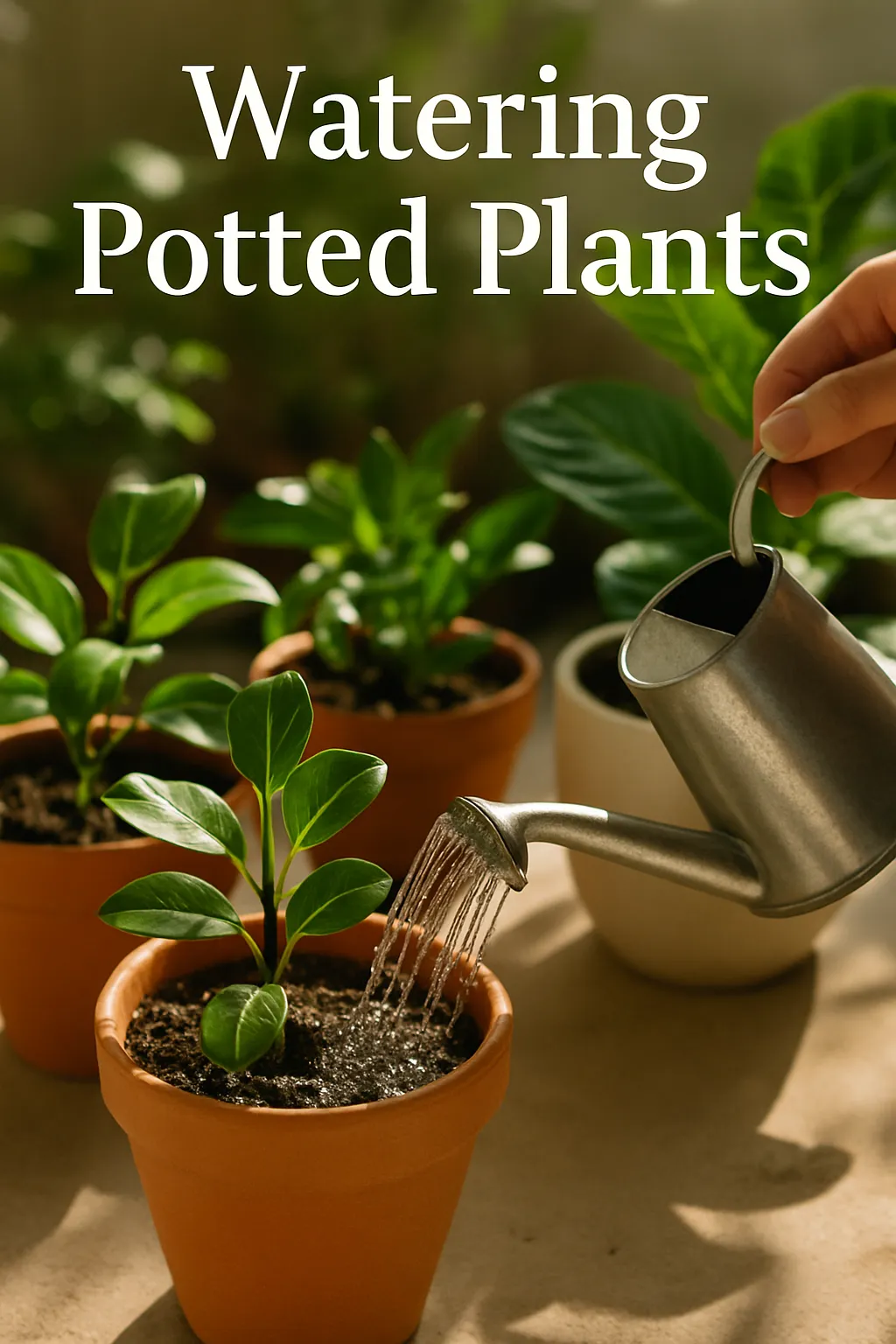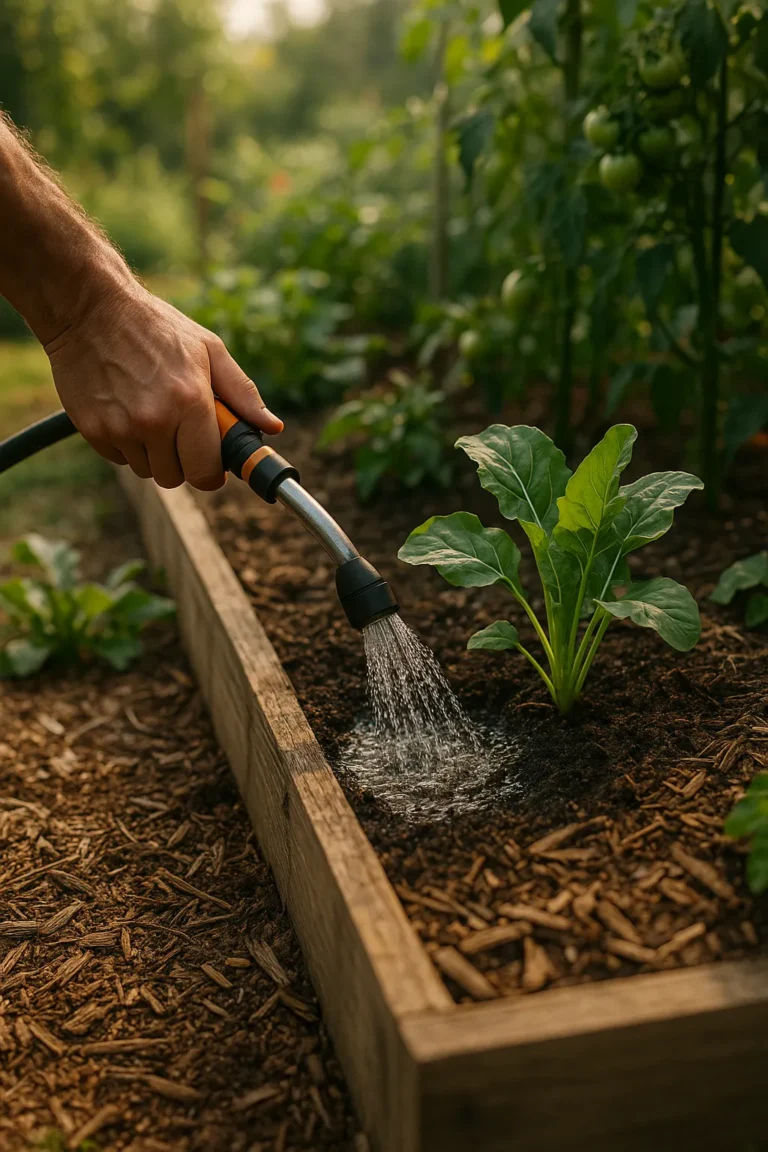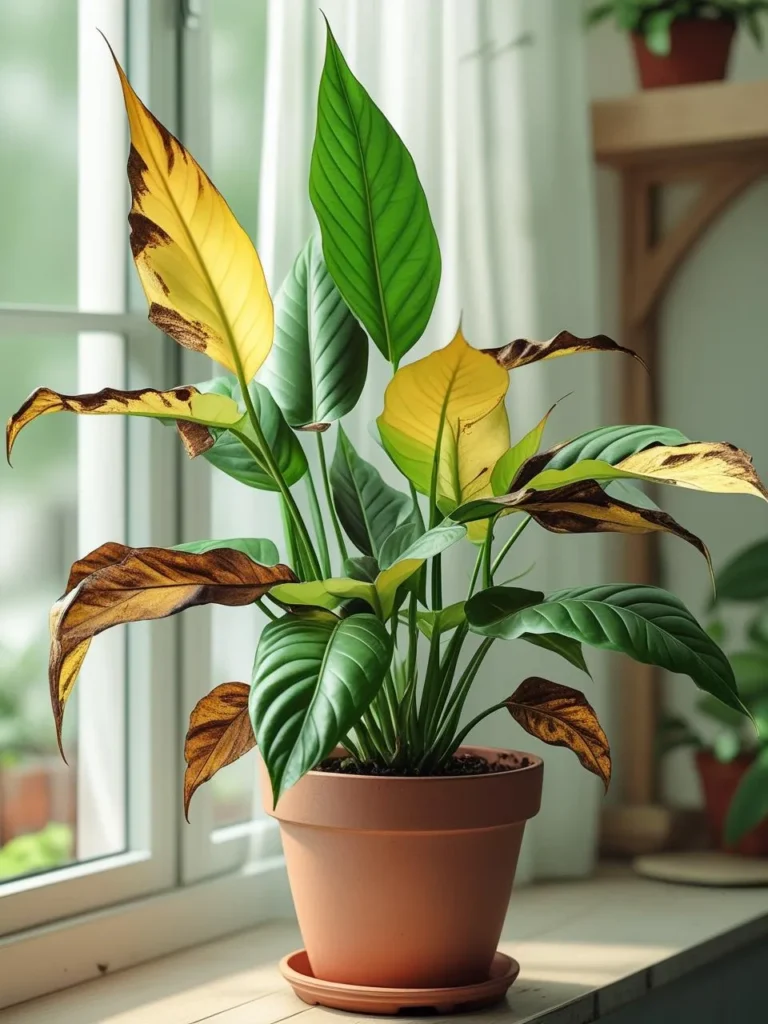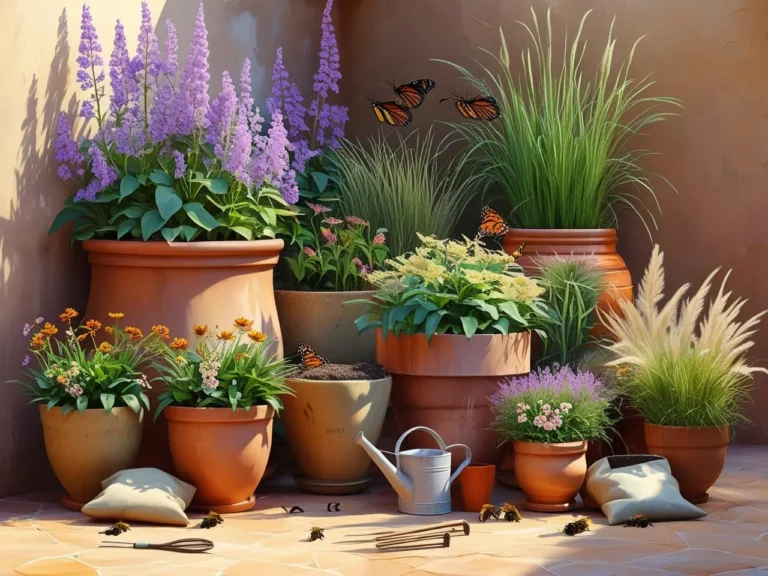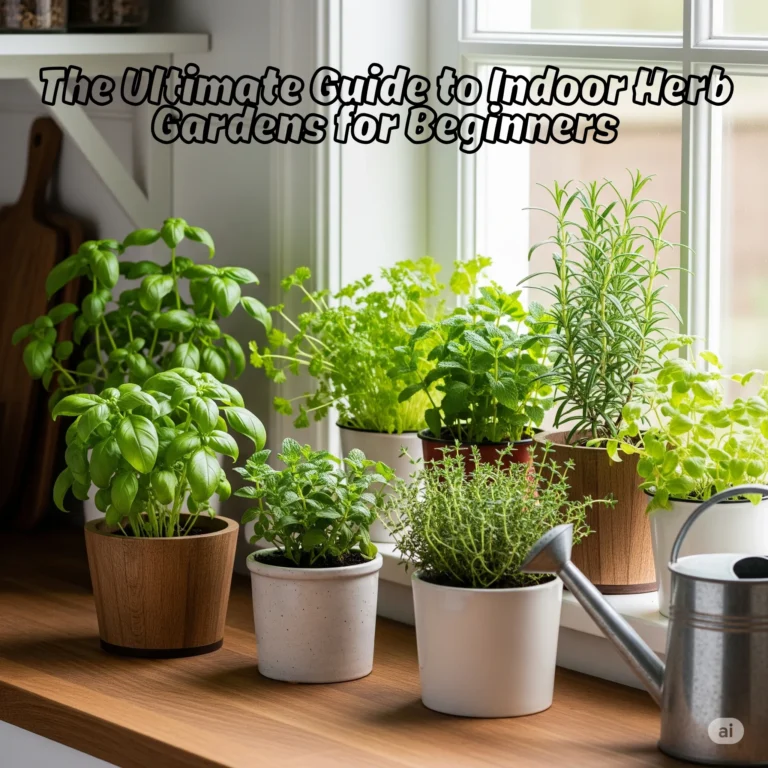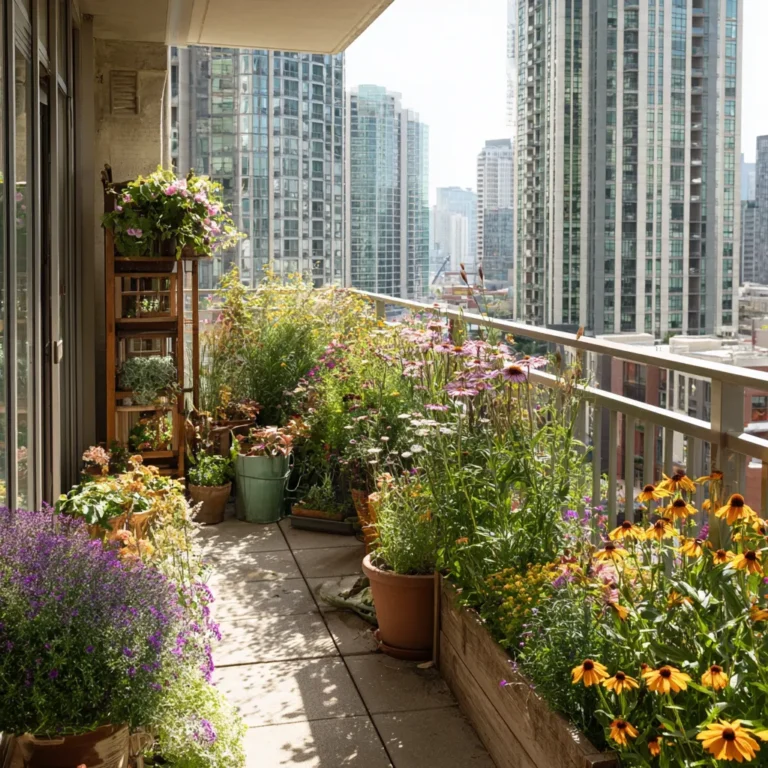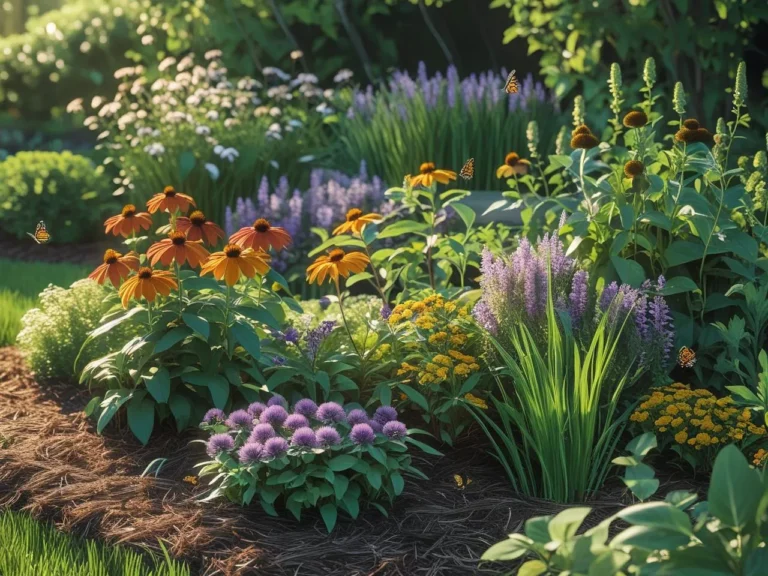Watering Potted Plants
Watering potted plants seems simple at first glance — but many new gardeners discover it’s trickier than expected. Too little water, and roots dry out completely. Too much, and root rot destroys your beloved plants. The key to successful indoor container plant watering lies in understanding your plants’ unique needs and finding that perfect moisture balance. This beginner-friendly guide will teach you practical, plant-safe techniques for watering potted plants that keep your green friends thriving year-round.

The Basics of Watering in Pots 💧
Understanding how to water potted plants starts with recognizing that container plants behave differently than garden plants. Potted plants dry out faster than their in-ground counterparts due to limited soil volume, increased exposure to air, and the container material itself. The golden rule? Always water thoroughly until excess water drains from the bottom holes. Never allow pots to sit in standing water unless you’re using self-watering containers designed for that purpose.
🪴 Tip: Drainage holes are non-negotiable for healthy roots!
Pot Size vs. Watering Frequency 📋
| Pot Size | Average Watering Frequency | Notes |
|---|---|---|
| Small (4–6″) | Every 2–3 days | Dries out quickly |
| Medium (6–10″) | Every 4–5 days | Balance of moisture and airflow |
| Large (12″+) | Weekly or as needed | Retains moisture longer |
The watering frequency for pots depends heavily on size. Small containers need more frequent attention, while larger pots hold moisture longer and require less frequent watering.
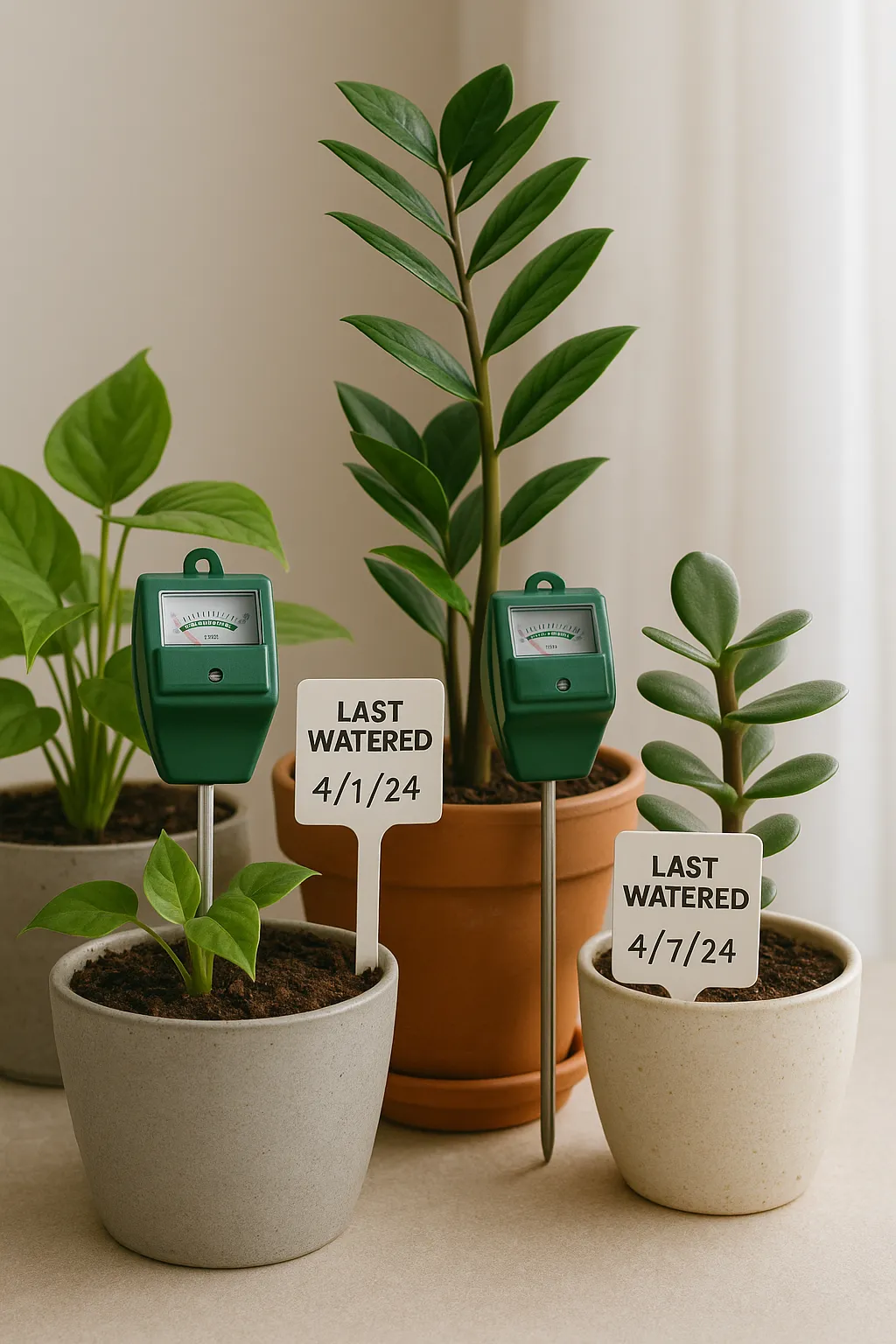
How Pot Material Affects Watering 🌿
Different materials dramatically impact your watering potted plants routine:
Clay/Terracotta: These porous materials absorb water and allow faster drying — perfect for plants that prefer drier conditions like succulents and herbs.
Plastic: Retains moisture well, making it ideal for tropical houseplants and gardens in dry climates.
Fabric/Grow Bags: Highly breathable but dry out quickly, requiring more frequent watering.
Ceramic (Glazed): Holds water effectively but may trap excess moisture if drainage is poor.
📌 Too little water is better than too much — overwatering kills more plants!
Pot Material Watering Comparison 📋
| Pot Material | Water Retention | Best For |
|---|---|---|
| Terracotta | Low (dries quickly) | Succulents, herbs |
| Plastic | High | Tropical houseplants |
| Ceramic (Glazed) | Medium-High | Decorative indoor pots |
| Fabric Grow Bag | Low | Outdoor veggies, fast drainage |
This comparison helps you choose the best way to water potted flowers based on your container type and plant preferences.
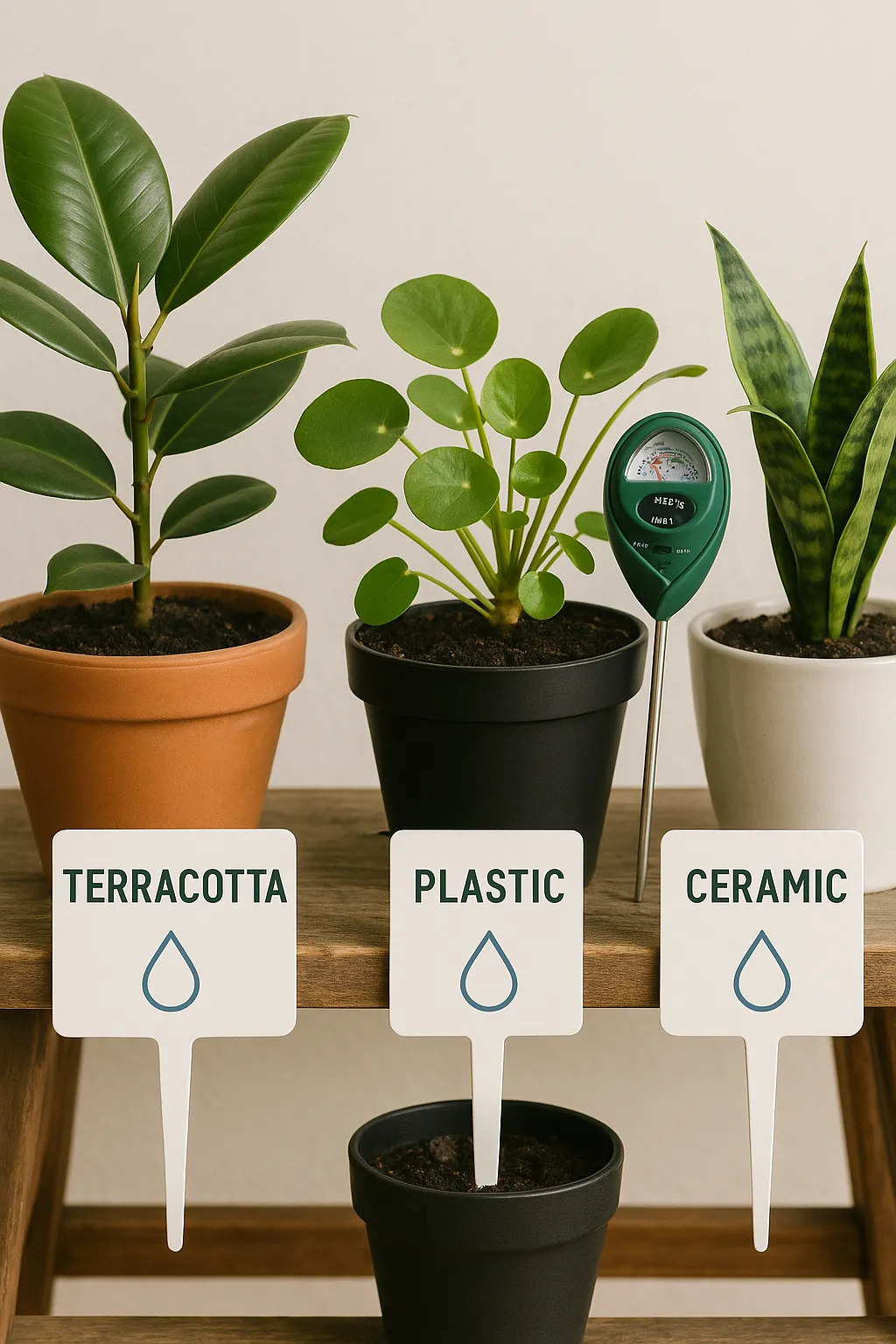
Common Watering Mistakes to Avoid 🚫
Avoid these frequent errors that lead to signs of overwatered houseplants:
Watering on autopilot: Check soil moisture instead of following a rigid schedule. Plant needs change with seasons, humidity, and growth cycles.
Standing water: Never let pots sit in water-filled trays for extended periods.
Temperature shock: Use room-temperature water rather than cold tap water that can shock roots.
Ignoring seasonal changes: Plants need less water during winter dormancy periods.
💧 Let the top inch of soil dry before the next watering.
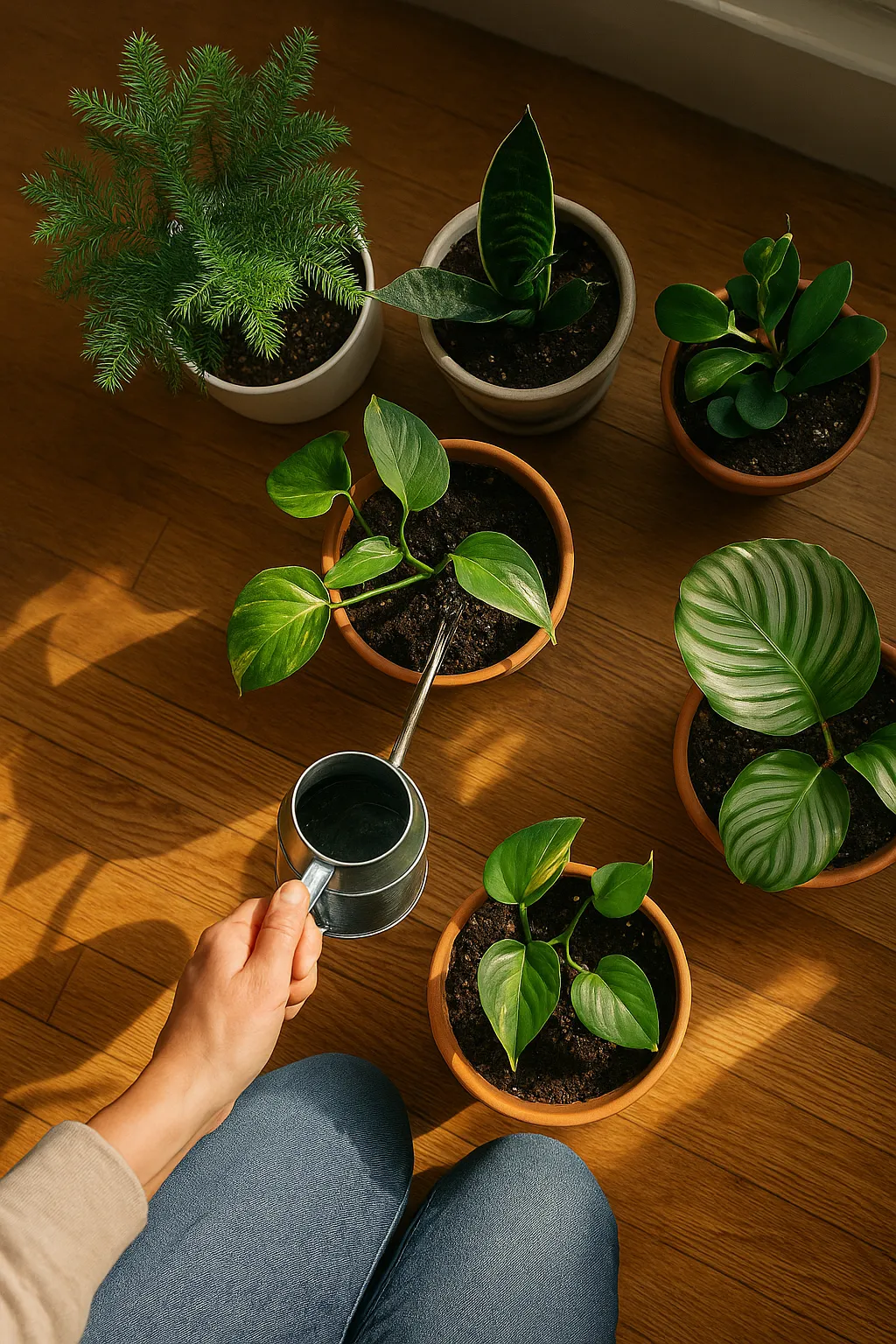
Conclusion 🌱
Mastering watering potted plants is the foundation of successful container gardening and the key to developing your green thumb. By understanding how pot size, material, and plant type affect moisture needs, you’ll develop the confidence to keep your plants healthy and thriving in any environment. Remember that consistent observation beats rigid schedules — check soil moisture regularly, ensure proper drainage, and adjust your routine seasonally as your plants’ needs change.
The journey from plant killer to plant parent starts with getting these watering fundamentals right. As you practice these techniques, you’ll begin to recognize the subtle signs your plants give you about their water needs. Drooping leaves, dry soil surfaces, and lifting pots to feel their weight all become natural parts of your plant care routine.
Don’t be discouraged if you make mistakes along the way — every experienced gardener has lost plants to watering errors. The key is learning from each experience and building your intuition over time. With these practical techniques, proper tools, and a little patience, you’ll never have to worry about over- or under-watering your precious plants again. Your thriving indoor garden awaits!
💧 Water slowly to avoid runoff and ensure deep root soaking!

